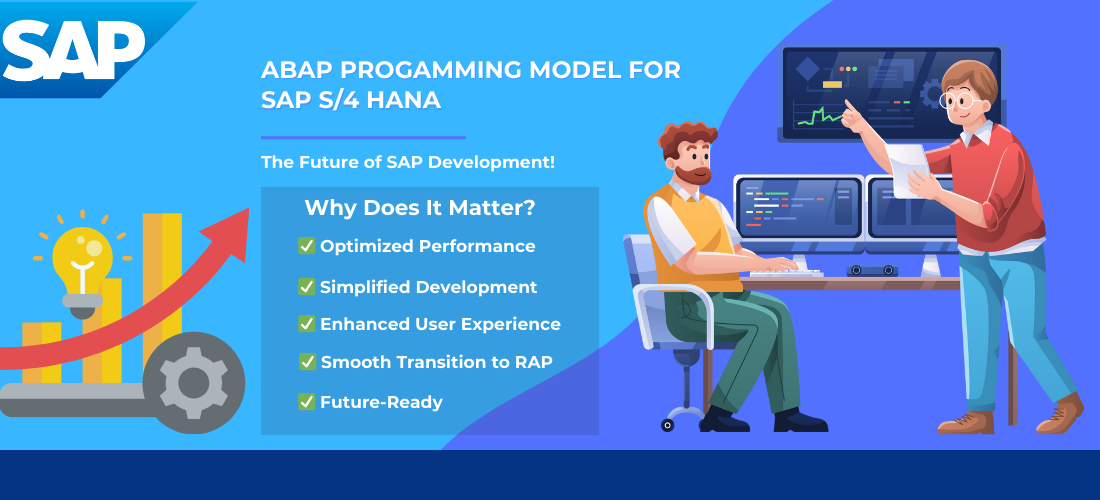Key takeaways
-
Plan first — migration is a project, not a one-click job.
-
Migrate master data, then transactional data, validate, and reconcile.
-
Use dry runs to catch gaps; cutover must be rehearsed.
-
Post-go-live hypercare is essential for a smooth stabilisation.
What is the SAP S/4 HANA Data Migration Process?
The SAP S/4HANA Data Migration Process is the structured approach of transferring data from legacy systems into the SAP S/4HANA environment. It ensures all business-critical information—such as finance, sales, inventory, and customer records—is accurately moved, validated, and ready for real-time operations.
The Value of SAP S/4 HANA Data Migration
Migrating data to SAP S/4 HANA is essential to ensure your business operates on accurate, consistent, and up-to-date information. It enables seamless process execution, improves decision-making with real-time insights, supports compliance with accounting and legal standards, and reduces operational risks that can occur from manual errors or outdated systems.
Step-by-Step SAP S/4 HANA Data Migration Process
| Phase | Key Activities | Owner / Tools | Deliverable |
|---|---|---|---|
| Prepare & Plan | Define scope, timeline, data owners, risk & cutover strategy | PMO, Business SMEs | Migration plan, roles, risk register |
| System Assessment | Profile data volumes, custom code, interfaces | Technical team, tools (profilers) | Assessment report, sizing |
| Data Mapping & Cleansing | Map fields, set rules, clean duplicates & invalids | Data owners, ETL/Excel | Mapping docs, clean datasets |
| Extract | Extract master & transactional data from legacy | LSMW / Data Services / Custom scripts | Raw extract files |
| Transform & Load (Staging) | Transform per mapping, load to staging, validate | ETL tools / S/4 Migration Cockpit | Staged data ready for reconciliation |
| Validation & Reconciliation | Reconcile totals, open balances, master records | Finance & Business SMEs | Sign-offs and exception logs |
| Mock Loads & Dress Rehearsal | Do full dry runs, fix gaps, optimize scripts | Cross-functional team | Rehearsed cutover playbook |
| Cutover & Go-live | Final delta extract, run migration, switch users to S/4 | PMO, BASIS, Data team | Live system with migrated data |
| Post-Go-Live & Hypercare | Fix issues, final reconciliations, handover | Support team | Stable production and project closure |
-
Prepare & Plan — Get stakeholders, decide scope, pick a cutover style (big-bang or phased) and document risks. Without this, migration stalls.
-
System Assessment — Know what you have: custom code, interfaces, data volume. This tells you effort and tools needed.
-
Data Mapping & Cleansing — Map legacy fields to S/4 fields. Clean bad or duplicate records — garbage in = garbage out.
-
Extract — Pull data out from ECC or other systems in agreed formats. Keep originals safe.
-
Transform & Load (Staging) — Apply mapping rules, fix formats, load into staging. Validate records before final load.
-
Validation & Reconciliation — Match totals (AR, AP, GL balances) and sample test documents to make sure nothing is lost.
-
Mock Loads & Dress Rehearsal — Run full dress rehearsals under timed conditions to expose timing and technical issues.
-
Cutover & Go-live — Run final delta extract, do migration steps, and open S/4 to users. Follow the cutover playbook exactly.
-
Post-Go-Live & Hypercare — Quick fixes, monitoring, and final reconciliations. Keep a rapid-response team for the first 2–4 weeks.
Transforming your business with seamless data migration
-
Fewer manual fixes and reconciliations.
-
Faster month-end and reliable reporting.
-
Clean master data for better operations.
-
Lower go-live risk with rehearsed cutover.
-
Clear audit trail for compliance.
Good planning, repeated dry runs, and tight business sign-offs make S/4HANA data migration predictable and safe. Treat data migration as the core project work — get it right and the rest runs smoothly.
Top FAQs
-
How long does a migration take?
Depends on scope — small projects 2–3 months; medium 4–6 months; large/complex 6–12+ months. -
Do we need system downtime?
Yes — usually for the final cutover. Time depends on delta approach and data volume. -
Which data should move first — master or transactional?
Master data first (customers, vendors, materials), then opening balances and transactional data. -
What tools are commonly used?
SAP S/4 Migration Cockpit, SAP Data Services, LSMW, third-party ETL tools, and custom scripts where needed. -
How do we ensure data accuracy?
Profile, cleanse, reconcile totals, sample checks, and multiple dry runs before go-live. -
Can non-SAP sources be migrated?
Yes — extract to flat files then transform/load using ETL or migration tools. -
Who must be involved?
Project manager, business data owners, finance SMEs, BASIS/infra, technical/ETL team, and testing resources.
Ageis Technova — Ready to help
Need hands-on help or a migration checklist and cutover playbook? Ageis Technova runs practical S/4HANA migration workshops and real-time simulators.
Book a free demo: WhatsApp +91-74287 06064 | info@ageistechnova.com



